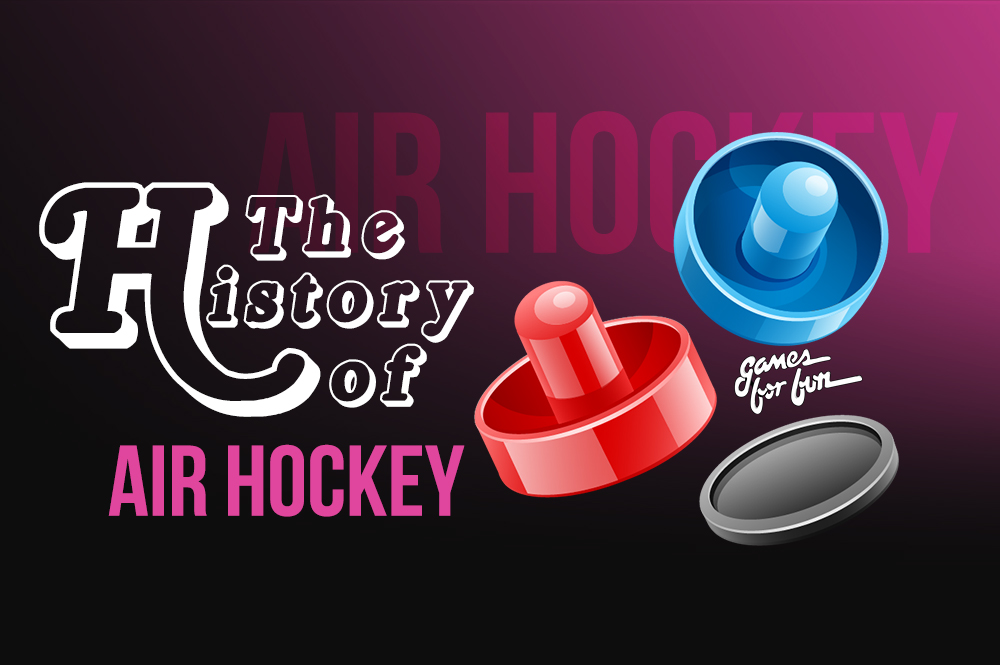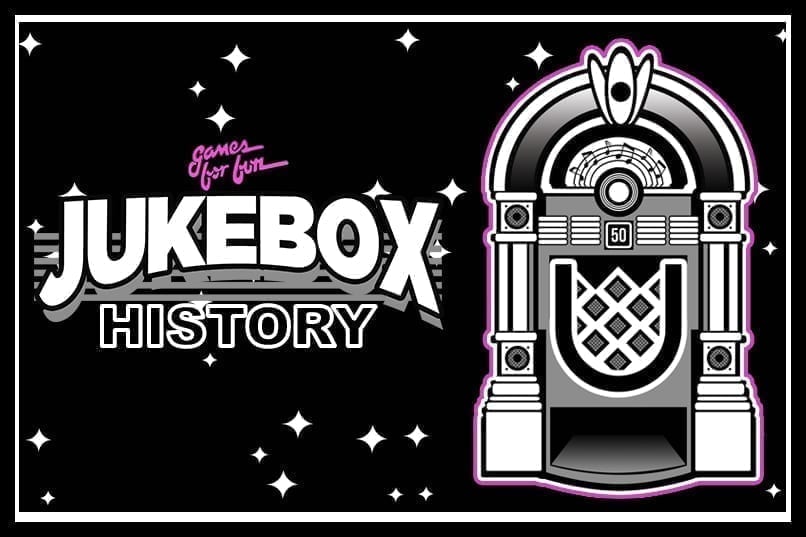Overview: The history of air hockey is fascinating — it’s a familiar game inspired by older technology that’s still fun to play today. Let’s find out more!
Air hockey is a fascinating game for those who want to enjoy a fast-paced diversion with their family and friends. The game has been around for some decades, and the history of air hockey is something of a winding path, but it continues to be a crowd-pleaser, whether played at a public arcade or in a rec room at home.
When it first started, air hockey was seen as a simple game, but its wide-ranging appeal stood out. Many of today’s most popular new games are played on screens and require an internet connection, but air hockey is a physical game. Anyone can learn to play, and anyone can enjoy being a spectator. We’re curious to find out about the history of this game that’s fun for all ages.
Let’s see who came up with this brilliant idea.
The History of Air Hockey:
Let’s start with the basics – air hockey was officially introduced to the market in the early 1970s. A trio of men named Brad Baldwin, Bob Kenrick, and Phil Crossman developed the concept for a game. Their intention was to create a miniature hockey game with a smooth and sleek table surface. So far, so simple. But they also wanted the puck to float on the table — a more challenging goal!
Realizing their vision was a slow grind, and the most significant challenge at that time was creating a frictionless surface. The inventors’ efforts continued, but even as they built physical models, they couldn’t perfect it.
In collaboration with Brunswick Billiards, a leading manufacturer of pool tables, the founders decided to hire engineer Bob Lemieux, and explained their idea for the perfect table design. He understood the assignment, and the first air hockey table design was finalized in 1972 – consisting of two goal posts, a puck, and handheld variations on hockey sticks, which are commonly referred to as mallets. The continuous flow of air that allows the puck was an innovation that made air hockey stand out from other popular arcade-style games of the time.
The launch: Soon after the launch, air hockey became a huge success. The public responded to a game that was innovative and one of a kind.
The game was especially popular in Texas. In fact, when asked about the game’s fan base, experts noted that half of the game’s players were from Texas! With time, it gained popularity in major US cities including Chicago and San Francisco, and then European countries, where the game has inspired an international roster of champions to perfect their skills.
Related Reading: The history of air hockey
The First Air Hockey Tournament:
The first air hockey tournament was played in 1973, with an eye toward taking advantage of growing interest in the new sport. At the first air hockey tournament, the winner was declared “The Best Air Hockey Player in the World,” which is an impressive thing to have on your resume, even for a game that had only been around a year. The champ was also given a not-insignificant $5,000 reward!
The event attracted more than 31 teams from different regions, but the reward and title weren’t the only thing that made it notable. It also featured Marv Albert, one of the NBA’s most popular announcers, providing play-by-play commentary!
The tournament took place in a grand hotel in New York City, and two college students known by the names “Barnett” and “Spiderman” (presumably no relation to the Marvel superhero) proved to be the most adept players. In the final round, the two faced off in 40 intense matches, and in the end Barnett walked away as the champ. Spiderman lost the game but won $1000 as a runner-up. Not bad!
The Emergence of Regulatory Bodies:
Although the game gained popularity quickly, it took a while for organized associations to be created. The Regional Air Hockey Association in Texas was formed to organize leagues, schedule tournaments, and keep a regulatory check on those tournaments.
This was followed by the formation of the United States Airhockey Association (USAA), which was built to establish regulations and other ground rules for the sport. The association kept working to bring together the best air hockey players – and it’s still the main regulatory body today, holding an essential place in the industry.
The Downfall of Air Hockey:
The first decade after its introduction was profitable for air hockey, but the sport faced a number of challenges in the following two decades. Sales of, and revenue from, air hockey tables plummeted as video games grew massively in popularity. Brunswick even ceased manufacturing air hockey tables in 1978. The public was shifting their attention to a new style of playing arcade-style games at the expense of established favorites, a trend that continued into the 1980s.
The Revival of Air Hockey:
Air hockey may have been overshadowed for a while, but it wouldn’t be left languishing in dusty corners of arcades forever. The downfall of air hockey was short-lived, and different organizations came together to support the revival of the game. The USAA also ensured that proper regulations continued, and prompted the emergence of professional-level tournaments to engage players and rebuild their enthusiasm for the sport.
In addition to various organizations, the contributions of an individual, Mark Robbins, were significant. Robbins is a legendary player with a few championships and records to his name. But he’s not just good at the game — he also played a role in re-invigorating air hockey as a popular competitive sport.
Starting in the early 1980s, Mark Robbins worked with Phil Arnold, the founder of USAA and an air hockey enthusiast, and they managed to save the game from becoming an obsolete artifact. The two decided to publish a newspaper ad asking anyone in possession of an air hockey table to contact them, and set about purchasing as many as they could. Robbins rented a truck to make the rounds, picking up air hockey tables wherever he could find them for sale. He kept them in an old barn in Colorado to preserve them for future tournaments and to continue the legacy of the sport.
Robbins and Arnold contacted Brunswick Billiards and attempted to persuade them to recreate the original air hockey tables — with Formica surfaces, rather than metal, to facilitate smoother play. Robbins then joined forces with a foosball table manufacturer called Dynamo Corporation, and worked with them to design new and affordable air hockey machines.
They didn’t exactly meet with immediate success. The first year the new tables were available, they could only manage to sell 100 of them. But their persistence paid off, and sales grew over time.
As the awareness of the “air hockey comeback” grew, manufacturers began selling thousands of air hockey tables annually. Mark Robbins later became the owner of Gold Standard Games, a marketplace that sells air hockey tables in hundreds of designs. Robbins also dedicated himself to organizing and maintaining tournaments with strict adherence to rules and regulations, ensuring that air hockey is taken seriously by its practitioners like any other sport.
Fans and industry experts believe that the efforts of Mark Robbins were the driving force behind the revival of air hockey. He struggled and dedicated himself to escalating sales and making air hockey a mainstream sport. Today, professional tournaments continue, and you’re likely to find tables at your local Dave & Buster’s or Chuck E. Cheese’s, or even at a bar or restaurant. And there are many devotees who have air hockey tables in their own homes!
In Summary:
After decades of providing fun and thrills, air hockey has proved itself as a game with staying power. Having an air hockey table at home is an excellent way to engage in some friendly competition, improve your agility, and keep your hand and eye coordination in check.
Unlike video games that require you to sit in a chair and stare at a screen, air hockey gets you up and moving. If you play enough games, it’ll give you quite a workout!
If you’d like to host air hockey games in your home or business, take a look at our selection of air hockey tables, pucks, and mallets. We at Games for Fun offer great prices on designs you’ll love. Float over to our website and take advantage of our lineup today!







